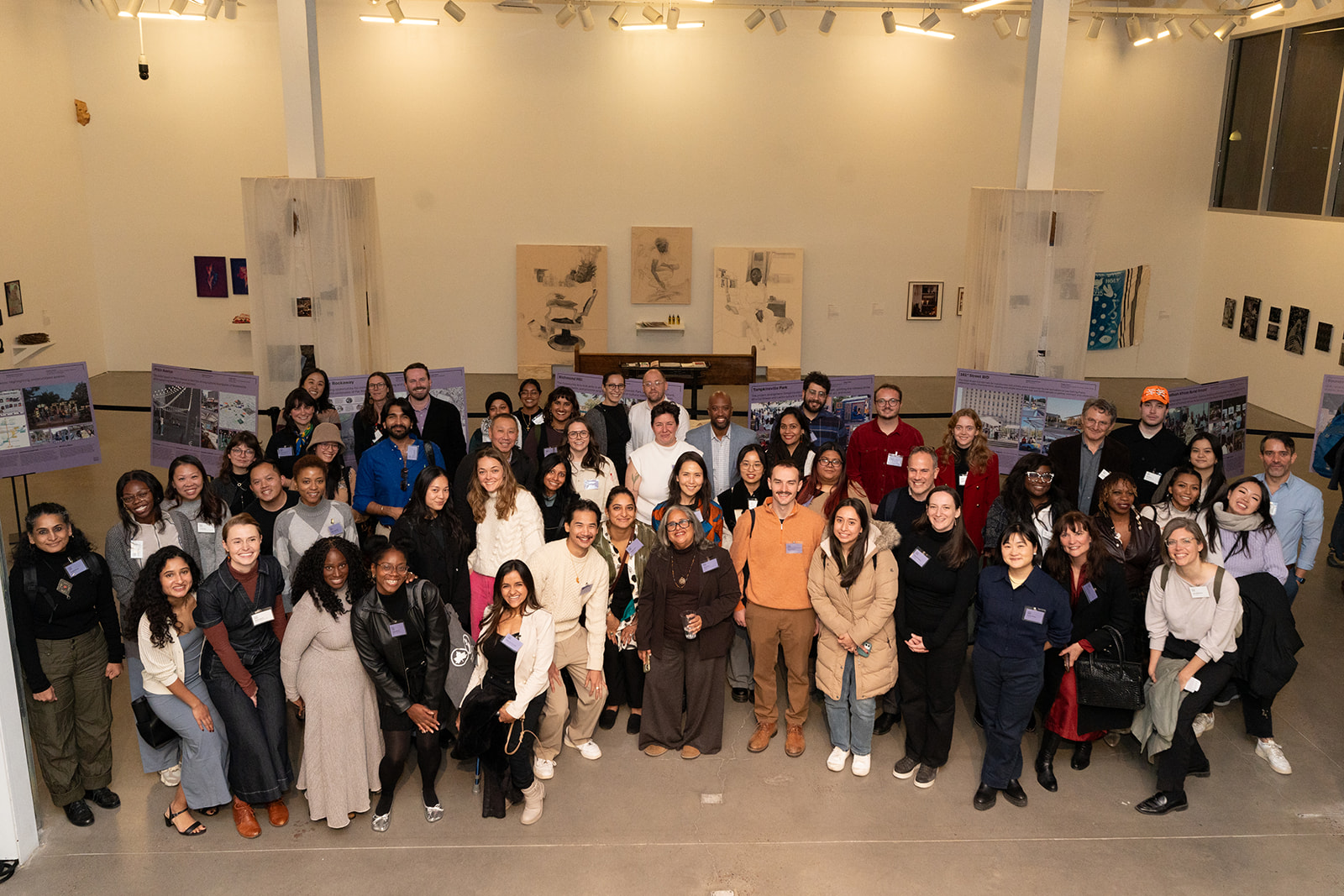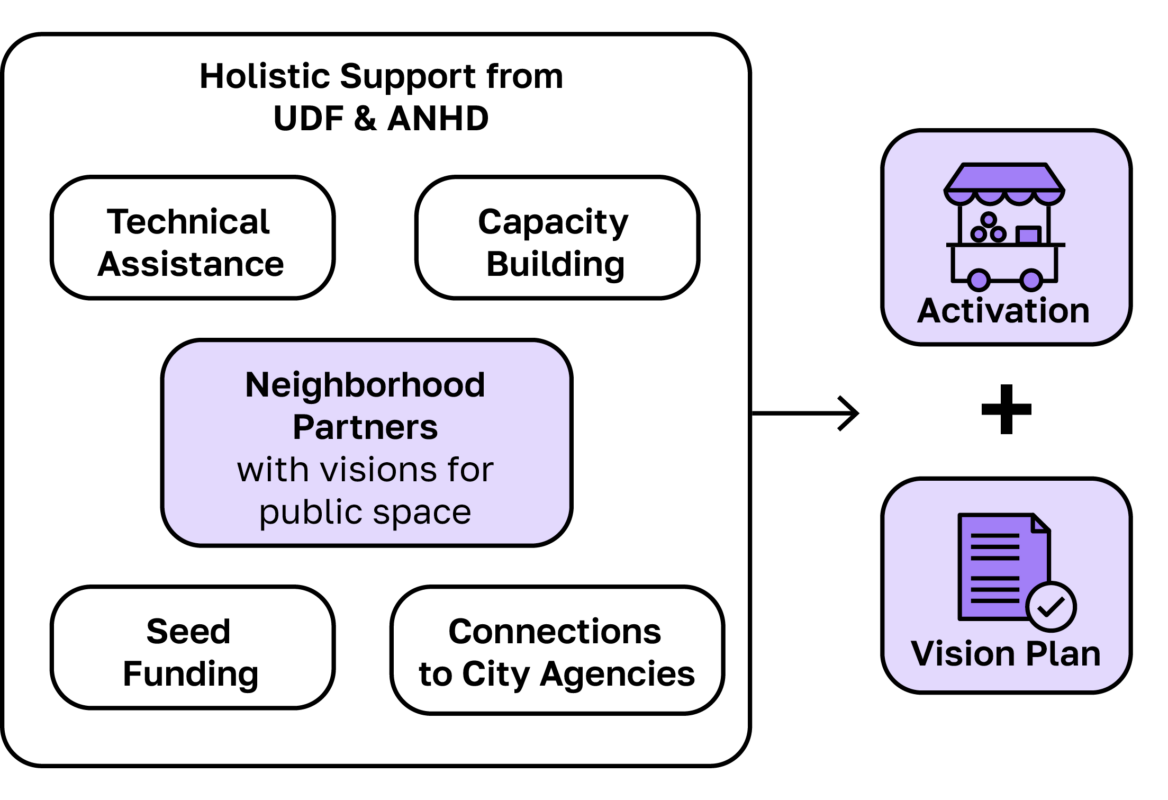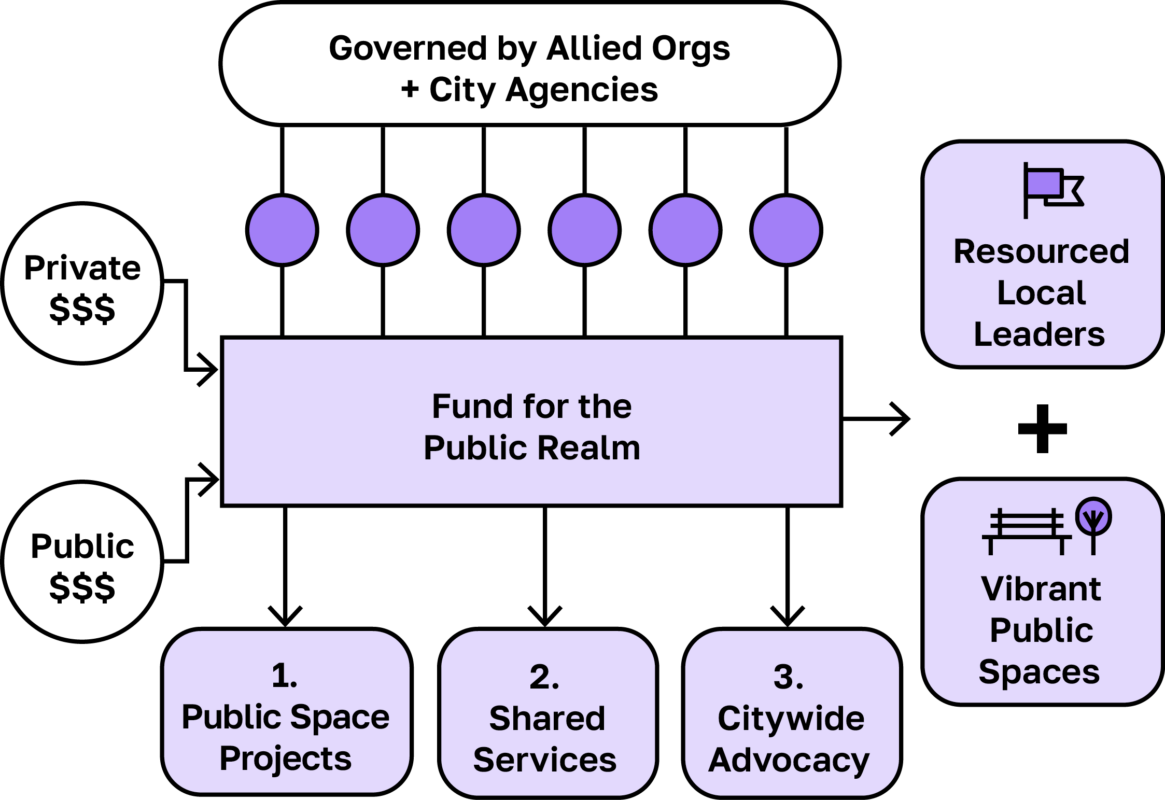
In Practice Notes, you’ll hear from Local Center teams and our own staff about what we’re learning as we support community-led design projects across New York City.
By Martha Snow and Gina Lee
To achieve equitable public spaces, we need our most disinvested communities at the helm.
Our public spaces — streets, sidewalks, plazas and parks — are essential places where we gather, celebrate and connect with our neighbors. Yet decades of segregation, displacement, and disinvestment have left many New York City neighborhoods without quality public spaces.
Local leaders are programming vibrant spaces, often on their own time and dollar. The City has worked to deepen public realm improvements in under-resourced areas through programs like the Public Space Equity Program. Technical assistance providers like The Hort and Street Lab offer essential support for maintenance and programming. But there is insufficient funding and technical assistance available to support grassroots organizations and leaders in low-income communities of color. What is possible when communities have adequate resources to shape their public spaces for the future?
Our Model:

We believe all New York City neighborhoods should have the power and resources to shape their futures.
Through the Local Center, we equip local leaders in low- and moderate- income neighborhoods with interdisciplinary technical assistance teams, funding, and a peer network. This year, eight teams across the five boroughs have taken on ambitious projects, each unique to the culture, history, and identity of their neighborhood. They launched markets, created history corridors, built creative installations, and more.
But even with these resources, they’ve faced many challenges, like burdensome permitting processes, expensive insurance and liability requirements, difficulty connecting to electricity and water, and uncertain pathways to capital investment and permanent change.
In Tompkinsville, Staten Island, Staten Island Urban Center brought their vision for an Afro-Caribbean Food and Spice Market to life. With input from residents and young people, design team A+A+A created Abuelita Masala, a multi-use structure that grounds the market, offers key amenities and hosts cultural programming. The team worked to permit and install the piece with the Department of Parks and Recreation, but now faces no clear pathway to sustain this valuable new park asset beyond the one-year permit period. According to Arianna Deane, co-founder of A+A+A, “A big challenge is longevity. It feels wasteful to go through such meaningful engagement and develop a community asset and not have a clear pathway to deliver more lasting change for the neighborhood.”
The Challenge:
If New York City can redesign our systems and refocus our investments to center the neighborhoods that have been most overlooked, the whole city will benefit. In order to support local visions for public space, we need to:
- Streamline the regulatory system and build true partnerships between City government and local leaders to enable creativity in the public realm
- Move from engaging communities to being accountable to communities
- Harness the power of the design community to support community-led design processes
The Fund for the Public Realm:
We propose establishing an intermediary organization to advance this approach. Drawing on models like the City Parks Foundation, the Fund for the Public Realm could collect and reinvest resources from the private, public, and philanthropic sectors, streamlining the bureaucracy that currently inhibits public space activation.

This nonprofit would be governed by place-based organizations, citywide advocates and programming partners, with representation from city agencies. The Fund would advance hyper-local public space solutions to drive economic growth and address health disparities citywide, by:
- Incubating public space projects in low-income neighborhoods by equipping local partners with technical assistance and funding to develop, test, and advocate for their ideas.
- Offering shared services to increase the capacity of local organizations across the city to lead public space work through peer-to-peer learning and connections to vetted experts.
- Advancing Citywide advocacy through innovative multi-year pilots and partnerships to address systemic public realm challenges like waste management and extreme heat or pilot new revenue streams.
In Sunnyside, Queens, Sunnyside Shines BID worked with di Domenico + Partners, Queens Lighting Collective and Phillips Lytle to enliven public spaces beneath the elevated 7 train with lighting and a night market. To permit the night market, the team faced roadblocks obtaining allowances to temporarily close parking spaces and to get short-term concessions agreements with the City. According to Molly Brennan, Special Counsel at Phillips Lytle, “We found it challenging that even with direct connections to the agencies through the Local Center and our legal expertise, there wasn’t a uniform approach — we were still at the whim of whoever was looking at the application. We were missing a transparent process that was reasonable from the community side.”
We have more ideas on ways we can change our city to center locally-driven public spaces. In the coming months, we will share more strategic and tactical policy ideas for discussion. We invite your feedback and look forward to collaborating to ensure every public space in New York City is determined by and for the people who live there.
Share your feedback and get involved: https://forms.gle/yZLk8VmBhPy6AtVZ6